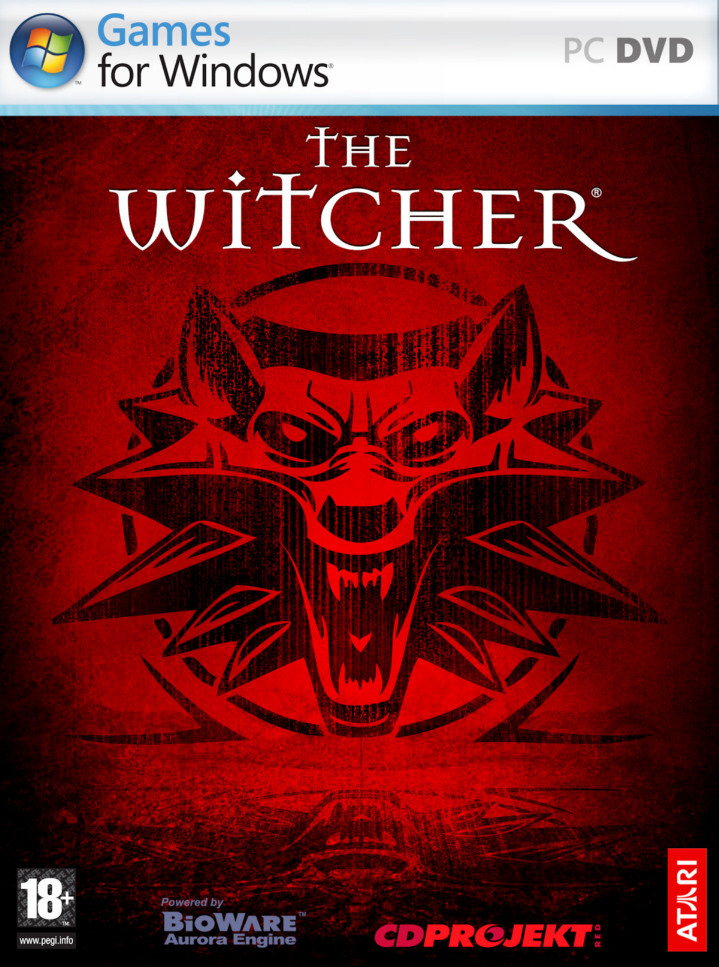The Witcher Preview
-
Category: PreviewsHits: 13639

Article Index
Page 2 of 3
The combat system is quite unique. Geralt has six different sword styles at his disposal - strong, fast, and group for both a steel and silver sword. Each of these grants greater effectiveness against particular opponents. If you're going up against a single slow-moving, heavily armored Salamandra lackey, then you should be using the strong style. If, instead, you're surrounded by a group of Ghouls, then the wild maneuvers that make up the group style would be a better fit. You won't have access to the silver sword until a little ways into the game, but you'll find that it makes a better choice for monsters while the steel sword should typically be used against human opponents. Once you've closed into melee range, a single click executes Geralt's initial sword attack. If the attack succeeds and isn't dodged or parried, then Geralt will go through a few motions and your mouse pointer will morph into a flaming sword for a brief period of time. During this window of opportunity, you can click again to chain consecutive combo attacks, each with greater damage potential than your initial swing. Click too early or too late and Geralt will lose his timing, forcing you to restart the combo. The timing really isn't all that difficult to master, so this shouldn't be cause for worry. On the positive side, it does give you the ability to assume an active role during Geralt's fancy swordplay. Geralt can also use up to five different signs - Aard, Igni, Quen, Axii, and Yrden - which are essentially the game's version of spells. Before you can make use of a sign, though, you must first learn it during the course of the game. For the purposes of this preview, I picked up Aard and Igni within the first dozen hours of gameplay. Aard allows you to launch a concussive blast capable of clearing debris and knocking down your foes (after which you can finish them off with a downward thrust of your sword), while Igni sprays jets of flame from your fingertips that will damage an opponent and potentially start them on fire (therefore doing additional damage over time). Once you've selected one of your available signs, simply clicking the right mouse button will unleash it. Each use of a sign drains your endurance, though the yellow meter seems to regenerate fairly quickly.
As Geralt progresses in levels, he'll earn bronze, silver, or gold talents that can be used to unlock upgrades to any of his four attributes, five signs, three steel sword styles, and three silver sword styles. Underneath each of these fifteen categories is a variety of upgrades that are further broken down into five consecutive levels. Each level has three to four different upgrades, meaning that each of the fifteen categories has around eighteen upgrades in total. Bronze talents will unlock the upgrades in levels 1 and 2, silver talents will unlock the upgrades in levels 3 and 4, and gold talents will unlock the upgrades in level 5. As an example, let's say you've leveled twice and now have six bronze talents to spend. You can distribute these talents across as few or as many categories as you wish. If you want Geralt to specialize in dealing significant damage to one human opponent at a time, then pick up a handful of upgrades under the Strength attribute and steel sword power style. If, instead, you want Geralt to be skilled at alchemy and capable of incinerating his foes, you might want to pick up a few upgrades under the Intelligence and Igni categories. The whole system works surprisingly well and offers quite a bit of diversity.
In addition to the game's main quest, side quests, and witcher contracts, you'll also be able to participate in a few different mini-games. Dice poker and fist fighting are both entertaining and can earn you some extra Orens if you're willing to bet on your skills (and luck). The sex mini-game (if you could call it that) is a little more unusual, however. Throughout the game, Geralt will have the option to sleep with quite a few different women. Every time he "scores" (for lack of a better term), you'll be shown a playing card depicting the woman in a seductive pose. While you're not privy to the events that actually take place betwen Geralt and his female friend, this extra curricular activity can still have some awkward moments. For example, after saving a damsel in distress, she invited Geralt to the old mill outside of Vizima for a little rendezvous as a reward. After bringing the wine she requested, the game switches to a cutscene showing the local residents discussing the possibility that "something haunts the old mill again" due to the, uh, moans coming from within. I can't say I'm familiar with Sapkowski's work, so I can only assume that his novels have a sexual theme embedded in them and the developers felt it was a necessary addition to the game. This mini-game does seem to be entirely optional, though, so you can probably keep Geralt celibate through the whole game if you really want to.


